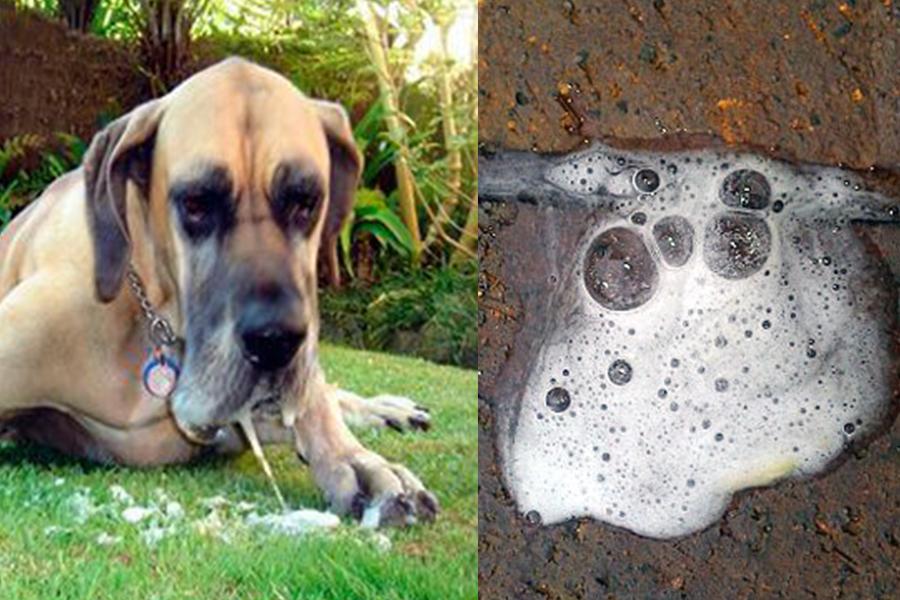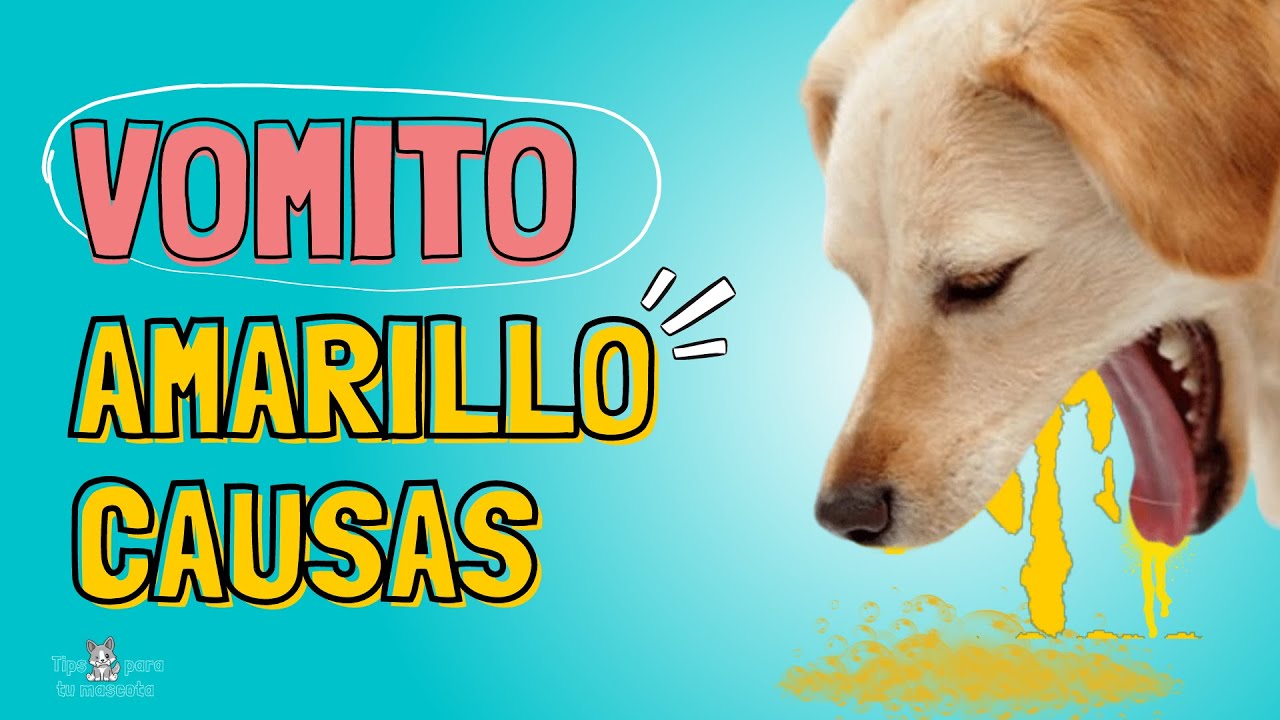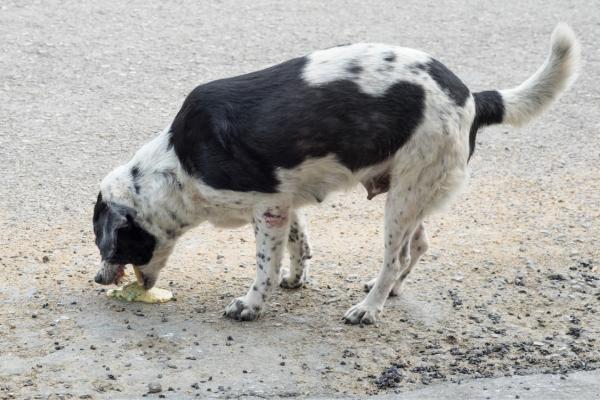Porque Mi Perro Vomita Espuma Blanca Y Amarilla

Okay, so picture this: You're woken up at 3 AM, not by a gentle nudge, but by a sound that can only be described as a tiny, furry foghorn clearing its throat. It's your beloved pup, and they're not feeling so hot. And, oh joy, there's a puddle of something foamy and... well, let's just say "off-white" with a tinge of yellow on your favorite rug.
The dreaded dog vomit. Specifically, the white and yellow foamy kind. Before you panic and envision a vet bill rivaling a small car payment, let's take a breath. It's surprisingly common, and often, not a sign of impending canine doom.
The "Empty Stomach, Empty Promises" Vomit
Think of it this way: ever been so hungry you felt nauseous? Dogs get that too! When a dog's stomach is empty for too long, especially overnight, it can produce excess stomach acid. That acid mixes with air, resulting in a frothy, yellowish, sometimes even white-ish vomit.
We affectionately call this the "breakfast-was-too-late" puke. It's basically their stomach complaining about the brunch situation. Solution? Try feeding your furry friend smaller, more frequent meals. Maybe even a bedtime snack to prevent the overnight grumbles.
The "I Ate Something I Shouldn't Have" Vomit
Dogs, bless their cotton socks, are notorious for their questionable culinary choices. From raiding the garbage bin to sampling that suspiciously delicious-looking mushroom in the backyard, they have a knack for finding things that definitely don't belong in their digestive system. My own golden retriever once ate an entire bar of soap. An entire bar!
If your dog is a garbage disposal in disguise, that foamy vomit might be their body's way of saying, "Whoa, hold up! Abort mission!" This is a classic case of indigestion. Keep a close eye on your pup after this type of episode. If they seem lethargic, refuse to eat, or continue vomiting, it's time to call the vet.
When to Actually Worry (and Channel Your Inner Superhero)
Okay, so most of the time, the foamy vomit is just a minor inconvenience. But sometimes, it's a signal that something more serious is going on. Think of yourself as your dog's own personal superhero, always on the lookout for trouble.
If the vomiting is frequent, projectile, or accompanied by other symptoms like diarrhea, lethargy, blood in the vomit, or abdominal pain, don't hesitate! Head to the vet immediately. These could be signs of things like pancreatitis, intestinal blockage, or even a more serious illness.
The "Things to Watch Out For" Checklist:
- Repeated vomiting (more than once or twice in a short period)
- Blood in the vomit (even small amounts)
- Lethargy or weakness
- Diarrhea
- Loss of appetite
- Abdominal pain (whining or reluctance to be touched)
Remember, you know your dog best. If something feels off, trust your gut (just like your dog should probably learn to do!). A quick call to your veterinarian can provide peace of mind and ensure your furry friend gets the care they need.
The Takeaway: Don't Panic, But Pay Attention
So, the next time you're greeted by the dreaded foamy puke, don't automatically assume the worst. Assess the situation, consider their recent activities, and remember the "empty stomach" and "questionable snacking" possibilities.
But also, be a responsible pet parent. Keep a watchful eye, and don't hesitate to seek professional help if you have any concerns. Because at the end of the day, our dogs are family, and their well-being is worth more than a spotless rug (even if you really loved that rug!). We want to keep our furry companions happy and healthy.
And who knows, maybe by understanding their quirky digestive habits, you'll strengthen your bond even further. After all, nothing says "I love you" like cleaning up a pile of foamy vomit at 3 AM!


















